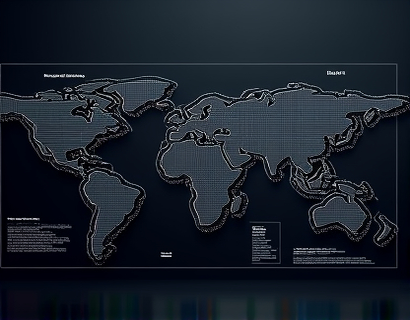Advanced Software for Graph Theory and Fluid Dynamics: Empowering Insights for Complex System Analysis
In the realm of complex system analysis, the integration of advanced software solutions for graph theory and fluid dynamics has revolutionized the way researchers and engineers approach intricate problems. These sophisticated tools are designed to streamline data analysis, enhance visualization, and drive innovative discoveries in mathematical modeling and fluid mechanics. For professionals in these fields, accessing powerful software that can handle the intricacies of graph theory and fluid dynamics is essential for unlocking new insights and optimizing performance in their respective domains.
The importance of advanced software in graph theory cannot be overstated. Graph theory, a branch of mathematics that studies the properties and applications of graphs, is fundamental in understanding networks and their behaviors. In various applications, from social networks to transportation systems, the ability to analyze and visualize complex relationships is crucial. Advanced software solutions provide researchers with the capability to model and analyze large-scale networks, identifying patterns and anomalies that would be difficult to discern manually. These tools employ sophisticated algorithms to perform tasks such as shortest path calculations, network flow optimizations, and community detection, offering precise and efficient analysis.
One of the key advantages of using advanced software for graph theory is its ability to handle large and dynamic datasets. Traditional methods often struggle with the computational demands of processing extensive networks, leading to significant time delays and potential inaccuracies. Modern software, however, leverages high-performance computing and parallel processing techniques to manage vast amounts of data swiftly. This capability is particularly beneficial in real-time applications, such as traffic management systems, where timely analysis and decision-making are critical. By automating complex calculations and providing instant visual representations, these tools enable researchers to focus on higher-level analysis and interpretation, rather than getting bogged down by computational tasks.
In fluid dynamics, the challenges are equally complex, but the benefits of advanced software are no less significant. Fluid dynamics involves the study of fluids in motion, encompassing a wide range of phenomena from the flow of water in rivers to the aerodynamics of aircraft. Accurate modeling and simulation of these processes are essential for designing efficient systems and predicting behavior under various conditions. Advanced software solutions in fluid dynamics offer powerful computational fluid dynamics (CFD) tools that simulate fluid flow, heat transfer, and related phenomena with high precision. These tools enable engineers to visualize flow patterns, identify potential issues, and optimize designs before physical prototypes are built, saving time and resources.
The integration of advanced visualization techniques in fluid dynamics software is a game-changer. Traditional CFD simulations often result in complex and difficult-to-interpret data. Modern software, however, employs cutting-edge visualization methods to transform raw data into intuitive and informative graphical representations. These visualizations help researchers and engineers quickly grasp the behavior of fluids, spot trends, and make informed decisions. Interactive 3D visualizations, for instance, allow users to rotate, zoom, and explore simulations from multiple angles, providing a deeper understanding of the underlying physics. This level of insight is invaluable in fields such as aerospace engineering, where even minor improvements in aerodynamic efficiency can lead to significant performance gains.
Another critical aspect of advanced software for fluid dynamics is its ability to handle multiphysics simulations. Real-world scenarios often involve multiple interacting physical phenomena, such as fluid-structure interaction or thermofluid dynamics. Advanced software can seamlessly integrate these different physics domains, allowing for comprehensive analysis of complex systems. This capability is particularly useful in designing systems that must withstand harsh environments, such as turbines in power plants or components in spacecraft. By simulating these interactions accurately, engineers can ensure the reliability and safety of their designs, reducing the risk of failures and extending the lifespan of equipment.
The applications of advanced software in graph theory and fluid dynamics extend beyond academic research to industrial and practical settings. In the automotive industry, for example, CFD simulations are used to optimize vehicle designs for better fuel efficiency and reduced emissions. By simulating airflow around vehicles, engineers can identify areas of high drag and make necessary adjustments to the design. Similarly, in the energy sector, fluid dynamics software helps in designing more efficient turbines and pipelines, leading to increased energy production and reduced operational costs. In the field of environmental science, graph theory and fluid dynamics software assist in modeling and predicting the spread of pollutants, aiding in the development of effective mitigation strategies.
For researchers and engineers, the choice of software is crucial. The software must not only be powerful and versatile but also user-friendly and well-supported. Advanced tools often come with comprehensive documentation, tutorials, and community support, ensuring that users can maximize their potential. Some software packages offer cloud-based solutions, allowing for collaboration across different locations and facilitating the sharing of results and insights. This accessibility is particularly beneficial in multidisciplinary teams where experts from various fields need to work together to solve complex problems.
Moreover, the continuous evolution of these software solutions keeps pace with the latest advancements in computational technology. As hardware capabilities improve, software developers incorporate new algorithms and techniques to further enhance performance and accuracy. Machine learning and artificial intelligence are increasingly being integrated into these tools, enabling more intelligent and adaptive simulations. For instance, AI-driven optimization algorithms can automatically fine-tune simulation parameters to achieve the best possible results, reducing the need for manual intervention and speeding up the analysis process.
The impact of advanced software on the field of graph theory and fluid dynamics is profound. By providing precise analysis and enhanced visualization capabilities, these tools empower researchers and engineers to tackle challenges that were previously insurmountable. The ability to model and simulate complex systems with high fidelity leads to more accurate predictions and innovative solutions. This, in turn, drives progress in various industries and contributes to the overall advancement of science and technology.
In conclusion, the adoption of advanced software for graph theory and fluid dynamics is no longer optional but essential for staying competitive in today's fast-paced research and engineering environment. These tools not only streamline data analysis and visualization but also open up new avenues for discovery and optimization. As technology continues to evolve, the potential for further advancements in these fields remains vast, promising exciting developments and breakthroughs in the years to come.










































